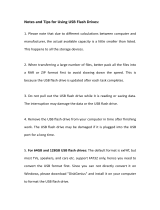
2
Access Restrictions ........................................................................ 24
Local Users/Groups .................................................................................. 24
Active Directory .......................................................................................26
NT Domain ................................................................................................28
User Authentication with an External SMB Server ................................30
Chapter 4 Managing Storage...................................... 33
RAID Arrays .................................................................................... 33
Working with RAID Arrays ............................................................ 34
Using JBOD ...............................................................................................34
Changing RAID Mode ..............................................................................34
RMM (RAID Mode Manager) ....................................................................35
RAID Scanning..........................................................................................38
Adding an External Hard Drive .................................................... 38
Connect an External Drive.......................................................................38
Compatibility ...........................................................................................38
Dismounting Drives ...................................................................... 39
Dismounting with the Function Button .................................................39
Dismounting from Settings on a Computer ..........................................39
Dismounting from Settings on a Mobile Device ...................................40
Checking Drives ............................................................................ 41
Formatting Drives ......................................................................... 41
Erase Data on the LinkStation Completely ................................. 43
Disk Quotas ................................................................................... 44
Quotas for Users .......................................................................................44
Quotas for Groups ...................................................................................44
Hard Drive Replacement .............................................................. 45
Rebuilding the RAID Array from a Computer ........................................46
























